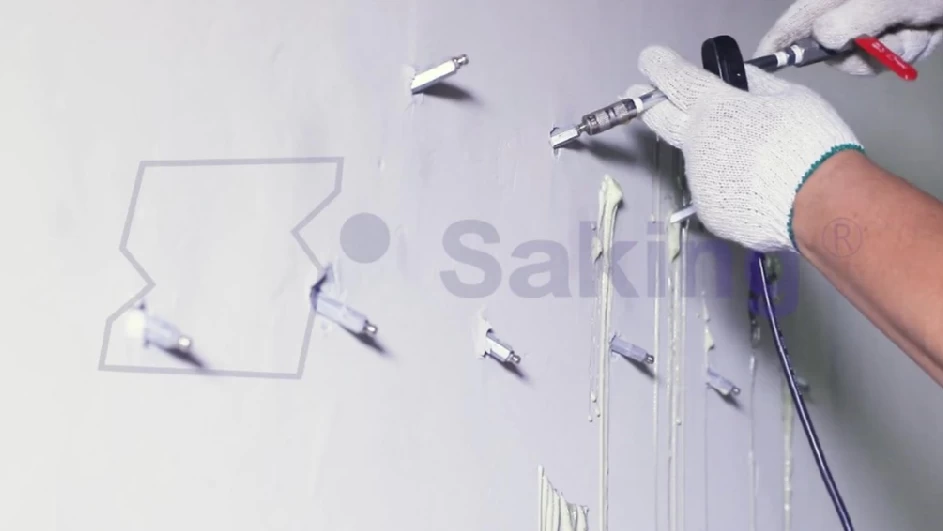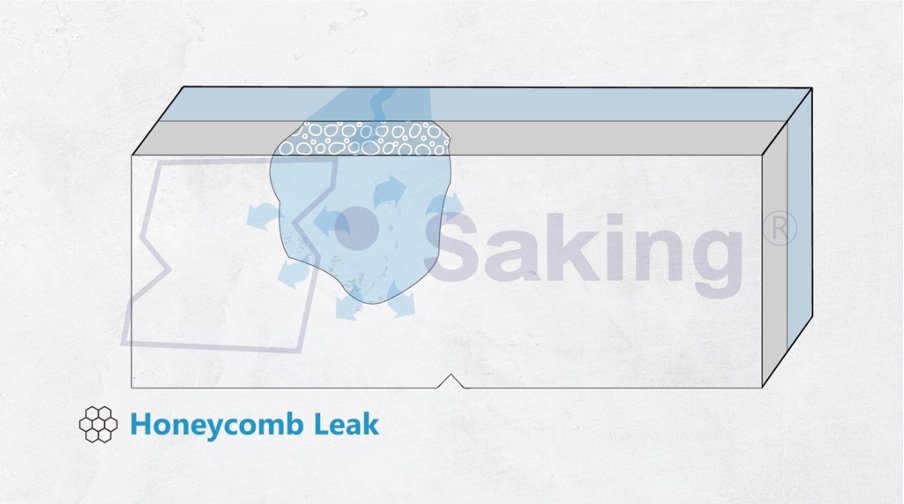Key Technologies for Building Waterproofing and Structural Repair—High Pressure Grouting Method

Introduction to High Pressure Grouting Method
The High Pressure Grouting Method is a construction technique that injects sealing materials into cracks or holes in a structure under high pressure, commonly used to address water leakage and reinforcement issues. Its principle is to fill gaps using the material's expansion properties, achieving both waterproofing and reinforcement effects.
This method is widely applied in the repair of water leakage in structures such as buildings, tunnels, and basements, particularly for cracks, construction joints, and honeycomb problems. By using this method, water leakage issues can be resolved quickly, while also enhancing the overall strength of the structure, effectively extending the building's service life. Moreover, this method is easy to operate and requires a short construction time, making it ideal for areas that need quick repairs without interrupting functionality.
Advantages and Challenges of High Pressure Grouting Method
The High Pressure Grouting Method offers the advantage of quickly and effectively repairing water leakage issues. The materials expand upon contact with water, penetrating and filling fine cracks to form a tight waterproof layer. Additionally, this method is suitable for various complex scenarios and can be implemented without the need for large-scale demolition of structures.
However, the process may encounter challenges, such as insufficient pressure or misalignment of Injection Packers, which require professional technicians to adjust the equipment and operations. Furthermore, if the structure's strength is inadequate, reinforcement must be performed prior to grouting to ensure project quality. To overcome these challenges, detailed assessment and planning before construction are crucial. For example, choosing the appropriate grouting material and setting the correct pressure ensures that the material fully fills the cracks and tightly bonds with the structure. Additionally, construction personnel must undergo professional training to master equipment operation techniques and emergency procedures to ensure smooth execution.
Materials and Tools for High Pressure Grouting Method
The primary materials used in the High Pressure Grouting Method include Hydrophobic Polyurethane and Hydrophilic Polyurethane.
- Hydrophobic Polyurethane expands upon contact with water and is suitable for general water leakage repairs.
- Hydrophilic Polyurethane is ideal for environments with more severe water seepage.
Construction equipment includes Pressure Grouting Machines, Injection Packers, and drilling tools.
The Pressure Grouting Machine is responsible for injecting materials into the cracks, while the Injection Packer serves as the delivery conduit, ensuring smooth operation. Additionally, depending on the construction needs, dual-liquid materials can be chosen for situations requiring rapid curing. Besides standard drilling and packer equipment, construction personnel also need pressure monitoring instruments to ensure even material injection and prevent overpressure that could damage the structure. For more complex cracks, flexible and adjustable Injection Packers can help improve construction accuracy and effectiveness.
High Pressure Grouting Construction Process
- Before High Pressure Grouting construction, the leak area needs to be inspected, and drilling positions should be marked to ensure the construction area is clean. Drilling is done at a 45° angle at the leakage or crack points, with the hole depth approximately two-thirds of the structure's thickness and hole spacing about 25 to 30 cm.
- Injection Packers are installed into the drilled holes and securely fixed.
- During the grouting process, the Pressure Grouting Machine gradually injects the material into the crack, ensuring that the material fills the crack and leaks out from the gaps.
- After the material has cured, the packers are removed, and excess material is cleaned. The leakage issue should be resolved.
During the acceptance inspection, all repaired points should be checked to ensure no leakage occurs, and confirm that the material is tightly bonded to the structure. Every step of the construction process needs careful operation, such as controlling the angle and depth during drilling to ensure the material spreads fully. Additionally, the grouting process should gradually increase pressure to allow the material to evenly penetrate the cracks. In the final acceptance phase, a leak detection instrument can be used to test the repair effect to ensure it meets the desired standards.

Application Scenarios and Construction Examples
The High Pressure Grouting Method is widely used in structural crack repair, particularly for filling concrete cracks with foam agents to achieve both reinforcement and waterproofing effects. Construction joints and expansion joints are also commonly repaired using this method to prevent water infiltration. Additionally, it is often used to repair honeycomb defects and concrete flaws by filling them with grouting materials to prevent water leakage and enhance structural strength.
In areas such as window frames and around pipes where the seepage occurs, the High Pressure Grouting Method provides an effective solution to block water penetration and protect the building structure. Tunnels and underground projects also utilize this method for waterproofing and strengthening, especially in long-term damp environments. Finally, high-pressure grouting is also applied in soil improvement and foundation stabilization, where grouting materials enhance the soil structure and increase the foundation's load-bearing capacity.
In practical construction cases, High Pressure Grouting has been successfully applied in large-scale basement leak repairs and bridge crack reinforcement projects, demonstrating its superior waterproofing and strengthening capabilities. Furthermore, many older buildings have used this method for structural repairs and reinforcement, extending their service life and improving safety.
Equipment Maintenance and Care
Maintaining High Pressure Grouting equipment is crucial. After construction, the grouting machine's internal pipelines should be cleaned to prevent material residues from clogging the system. Additionally, regular inspections of pipelines and any signs of wear or damage should be conducted, with necessary parts replaced to ensure long-term stable operation. Common issues like insufficient pressure or leakage should be checked for good sealing at the equipment connections, and maintenance or replacement should be performed as needed. Equipment maintenance also includes regular lubrication of mechanical parts and calibration of pressure settings to ensure precise and stable operation. It is recommended that construction units maintain a complete maintenance record to detect issues and address them in a timely manner.
Conclusion and Recommendations
The High Pressure Grouting Method is an efficient and adaptable waterproofing and reinforcement technology widely applied in water leakage repairs for building basements, tunnels, bridges, and other structures. By injecting waterproof materials into cracks or holes under high pressure, the material's diffusion and curing can achieve both leak prevention and structural reinforcement. Pre-construction assessments and equipment preparation are necessary to ensure the proper selection of materials and operations. After construction, inspection and regular maintenance should be conducted to enhance the repair quality and structural stability, providing long-term protection.
Update: 2025-03-31
